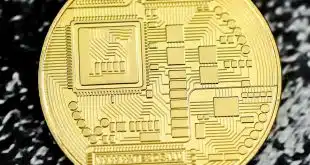Remember the good old days, when you tossed a quarter into the peddler’s jar and picked up the daily paper in the train station? Now that was frictionless. You did not know the peddler. He had no clue who you were. You did not receive any paperwork: no invoice, no monthly statement. There was no overhead of reconciliation, no paper trail, no privacy violation.
How far we have come since these good old days!
Payment technology today is choked on friction. There are so many moving parts. Take payer and payee. Each must identify himself to the other. Each must negotiate with his bank account (in case of legacy money) or with his crypto address (in case of crypto money). The accounts or the addresses then need to be negotiated by the payment environment, which is the bank and card network, and any go-betweens (e.g. PayPal, Venmo), in case of legacy money, or the public ledger and payment exchange, in case of crypto money.
“What’s the big deal?” I hear people ask. All this “friction” is lightning fast (except when your EMV transaction lingers). Indeed it is. But that is not the issue. A mechanical system that operates with friction can be pushed to run sufficiently fast, but the friction eventually wears it down and brings it to a halt. Payment friction represents the payment overhead, complexity that is prone to errors and invites abuse. To counter these ills, it is necessary to add friction in the form of auditing and securing the data. All this add-on is, again, prone to errors and abuse.
And as it becomes more complicated, there are fewer and fewer people who understand how it all clicks. I sit in meetings where expert accountants have to educate me on some auditing practice, while asking me about crypto matters. No one in the room has a comprehensive take on the machinery. How scary is this? And then come the regulators and the legislators. Most of them, in the best case, understand well one or two aspects of this maze. But they put their heavy foot down, adding friction, complexity, and confusion.
Complexity and confusion are a Petri dish for cyber malware, which makes the panacea of frictionless payment seem unrealistic as ever.
Help, though is on the way. Consider an electric vehicle zooming over an underground magnet that sends a charge to the vehicle’s battery. The charging is instantaneous, and it must be paid for frictionlessly. Why not apply the toll-tag solution? Won’t do, because there are many charging outfits, and the monthly statements are costly and prone to errors and abuse. The only acceptable solution is a frictionless counterflow of digital money. So when the car moves on, the energy is charged and paid for—just like with the daily paper at the train station.
Welcome to the future of pay-as-you-go—as fast as you go! The smart world of the Internet of Things will see lightning-fast negotiations between “things” that pay each other faster than we can pull our wallet from our pocket. Cars weaving in and out of the fast lane will pay per use of this lane at the speed of their travel. At BitMint, we see great interest in this technology in China, which bills itself as a leader.
Once this technology matures, it will creep into ordinary payments. As soon as we resolve the regulatory mess, we can let a customer flash his mobile screen before the merchant’s camera and thereby pay money that will cost the merchant between zero and 0.5% to redeem into his account, bypassing the settlement overhead of the networks. The money is cash-like, with a small crypto addendum to satisfy the local regulator, but insuring privacy beyond that.
Digital-money technology also leads the way in the design and construction of powerful cybersecurity weapons that will make it unprofitable to hack into a database storing public personal-identity info. They will also tether money to its owner, so that a thief will not be able to spend it. This will reverse today’s trend toward forever-swelling security measures, and the corresponding regulatory burden, which by itself will reduce payment friction considerably.
All in all, the winds beyond the horizon are quite promising, but they are hard to detect because payment today is a story of complexity running amok. Hold your breath. Help is on its way!
—Gideon Samid • Gideon@BitMint.com




